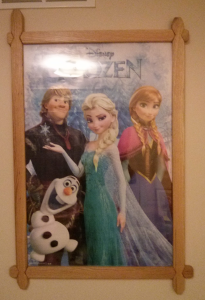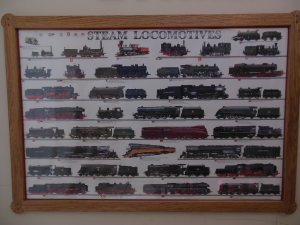Children have a unique and optimistic perspective of the world that most of us with more years under our belt have lost. Anyone who has watched a child with a cardboard box knows that their imagination can run wild with possibilities as they pretend it to be flying a spaceship or transmogrifying themselves into fierce dinosaurs. Even their line of questioning which consists of a single word, “Why,” indicates the purity of curiosity which most adults have lost. Children build space stations in their mind, forts from furniture, and swords from branches. Their unbridled creativity allows them to see the most amazing scenes which an experience laden mind cannot see.
Zen Buddhism has a concept called shoshin, beginners mind. Children naturally excel at this because they are not saddled with experience. In their inexperience they will not discard and idea out of hand because it may not work or is too inefficient that an experienced person would toss aside. In Mark 10:13-16 Jesus teaches that we must receive the Kingdom as like a child. The Lord knows that we become cynical as we age and that our perspective becomes one which becomes less imaginative and limited by our experience. The wisdom of the world is that no one in power would give up everything for those that hate them. But a child knows no reason that that such reasoning is not believable. A child trusts and looks to their father for all of their needs.
While children have the advantage of inexperience when it comes to imagination, adults we have the capability to transforming imagination into reality. Where a child might imagine a stick as a sword an adult with experience can actually make something that looks like a sword. Or in the case of my daughter, a wand.
Safety
As someone with more scars on his hands and fingers than would indicate a strong grasp of safety, it is crucial to consider safety before bringing your children into the shop. It is one thing to add to your own battle scars in the shop, but quite another for your child. If you want your child to have fun and want to come back they need to avoid getting hurt.
When you introduce a child to the shop you will want to make sure you have all of the safety equipment appropriately sized for the child. For the wand project with my daughter we needed a face shield. When none of the face shields we have fit her we had to head to the local hardware and pick up a new one and then modify it with some parts from a child’s hard hat since I was not able to find one which would fit her. Depending on the project you will want to find PPE (personal protective equipment) sized for children.
- Safety glasses
- Ear Muffs
- Work gloves
- Respirator
Beyond PPE, you will want to be familiar with the tools and methods you will be teaching the child. In specific you will want to focus on safety aspects of the tools so you are able to notice unsafe practices the child might start using and be able to stop them quickly. Your experience with the tools will also help pick safe spots for the child to stand to avoid debris or off cuts. Avoid using tools you are unfamiliar with yourself when trying to teach a child.
Projects
A few considerations when choosing a project for a child are their interests, attention span, and capability. Select projects which a child can look forward the completed project. A child who dislikes birds is not going to be interested in bird houses. A child who enjoys fantasy books would probably appreciate making a wand. Even though a child might enjoy a doll house (or castle) they are unlikely to have the stamina to hang out in the shop the several days it might take the make. The duration of the project can be adjusted by pre-working parts and bringing the child in for assembly. Children can be fearless to try new things when a parent encourages them, but you need to consider their capabilities. In general children are not going to be able to attain the level of precision required for many projects. Avoid projects which are going to fail if the joinery is not precise or interlocking pieces do not interlock.
Instruction
Presumably you are encouraging your child to come into they shop with you to enjoy a pastime that you enjoy. When safety is not an issue you will want to allow leeway if the child is having a good time. Keep your expectations of productivity reasonable. It is probably best not to work on a project in which you are heavily invested. Especially when they child may need direction it is best to give your complete attention to the child, not your own project. Work on your own projects on your own time.
Since you are instructing a child you will want to keep an eye on their progress. Some parts of the project can be simple and require little more than a starting instruction. Sometimes you will be required to step in and assist or perform a demonstration. As the adult you will need to discern whether a child is struggling because it is challenging or they are just not ready for a particular task.
Another reason a child might seem to be struggling is boredom or exhaustion. Avoid the boring parts of the project (like sanding or finish) especially for early projects. If you feel it really must be done come back after the session in the shop has ended. Exhaustion for a kid does not necessarily mean out of energy, but mentally they are incapable of concentrating on the same task and need a break. Avoid drawing out the sessions in the shop with children too long and err on the side of shorter sessions.

